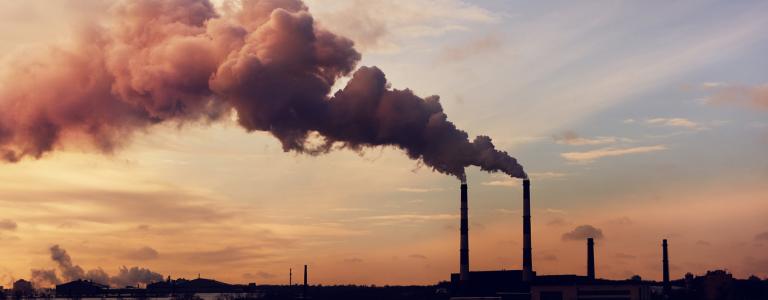Canada’s Oil and Gas Emissions Cap Framework is a Welcome Step Forward, but Not Enough to Meet Climate Goals
Today, the Government of Canada announced a groundbreaking policy framework for a regulatory cap on oil and gas sector emissions. This is a welcome step forward that lays the foundation for a sector-specific cap-and-trade system to tackle emissions from Canada’s most polluting industry.
At the same time, the Government also released the first official progress report on its 2022 Emissions Reduction Plan confirming that current policies are insufficient to meet Canada’s 2030 targets. An ambitious emissions cap has significant potential to get Canada’s climate agenda back on track, but only if certain areas of concern in today’s framework are addressed.
Today’s announcement—in conjunction with methane regulations announced earlier this week—lays the groundwork for regulating upstream oil and gas sector emissions in Canada. The proposed cap-and-trade system will mandate emissions reductions by 2030, while progressively lowering the cap over time in line with a yet-to-be-determined trajectory for net-zero by 2050. This sends a clear signal to the industry that emissions must decline, and private investment ought to reflect that reality. When implemented, this policy would also ensure that the sector’s current projected emissions increase will halt by 2030—a huge step toward meeting Canada’s climate goals.
That said, there remain some areas of concern in the proposed framework. The proposed emissions reduction target of 16-20% relative to 2005 levels (35-38% relative to 2019) is far below the economy-wide goal of 40-45% reduction by 2030, and even weaker than the 31% reduction in the Emissions Reduction Plan. While this framework should be applauded for suggesting that emissions will be mandated as net-zero by 2050, the relatively lenient 2030 target puts Canada’s climate goals at risk while shifting responsibility to other sectors.
The framework also lays out additional compliance flexibilities for firms that exceed these reduction targets, including carbon offsets and payments into a decarbonization fund. Carbon offsets however—where companies pay for emissions reductions in other sectors or abroad—are often ineffective for reducing overall emissions. Payments to a decarbonization fund, moreover, do not equate to emissions reductions at all as any future emissions reductions from clean technology would already be accounted for under the cap.
“We need this cap to tame the beast,” says Aaron Cosbey, Senior Associate at IISD. “The oil and gas sector is the single largest emitter of greenhouse gases in Canada, and it’s still growing in spite of all our current policies. But to rise to that challenge, the version of the cap we actually pass into law will have to be a lot stronger.”
To ensure that Canada’s 2030 climate targets are met, and that industry does its fair share in meeting those targets, we encourage the federal government to review and incorporate feedback including:
-
Strengthening the emissions reduction target for 2030—as close to 40% below 2005 levels as possible—to ensure that Canada’s most polluting sector does its fair share in reducing national emissions.
-
Minimizing the role of offsets and investments in a decarbonization fund to enable industry to meet its 2030 targets.
It is imperative that the Government of Canada keep up the momentum by publishing draft regulations as soon as possible. This will give industry more time to meet its 2030 targets.
With an ambitious emissions cap, Canada has the opportunity to implement a world-leading policy for regulating the oil and gas industry while getting back on track with its Emissions Reduction Plan. Doing so is both economically feasible and widely popular among Canadians across Provinces and Territories.
You might also be interested in
Ottawa supports Big Oil over the climate
One can only imagine the positive buzz these days inside the boardrooms of Canada's oil companies, as they rake in record profits and plan major expansions of their oil production. Amid all the good cheer, one could easily lose sight of the fact that those plans will push the world dangerously closer to the brink of irreversible climate chaos. Even as the world finally signed a commitment at UN climate talks last month to begin transitioning away from fossil fuels, Canada's major oil companies are poised to do exactly the opposite — to greatly expand their fossil fuel production.
The Critical Next Step: What you need to know about Canada’s 2030 climate target
Canada's climate target for 2030 is within reach, but more stringent policies and clearer government communication will be needed to get there. Our expert explains why these developments are critical for Canada to help avoid the worst impacts of climate change.
Freedom from fossil fuels? Canada's energy-security future hinges on continued growth of renewables
It's often stated that Canada's abundant oil and gas reserves provide energy security. Yet recent geopolitical turmoil–such as Russia's invasion of Ukraine–has tested this notion, causing oil and gas prices to surge, fuelling inflation and making Canadians' lives more costly. Increasingly, especially given climate change's existential threat, it's apparent Canada's energy-security future involves moving beyond oil and gas.
CSDDD: EU's Due diligence law vote should drive supply chain sustainability efforts
The European Parliament has voted to adopt the Corporate Sustainability Due Diligence Directive, aiming to address the environmental and social impacts of the supply chains of Europe's large corporations.
